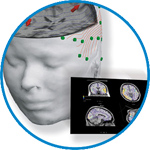- Home
- About ANT
-
Products

asa
asa is a highly flexible EEG/ERP and MEG analysis package with a variety of source reconstruction, signal analysis and MRI processing features.
.jpg)
eego mylab
The new frontier in multimodal brain research. With up to 16 kHz sampling rate, 256 EEG channels and unique software features, eego mylab gives you an unprecedented in-depth understanding of the human brain.

eego sports
eego sports offers complete freedom to collect high-density EEG data, bipolar EMG signals, and a variety of physiological sensor data, wherever and whenever required, with publish quality data in less than 15 minutes!

waveguard net
The waveguard net sets a new standard for research applications requiring high-density EEG data acquisition with quick preparation time, high flexibility, and subject comfort.

visor2
Our new and upgraded visor2 solutions integrate all the latest technologies for navigated rTMS, dual-coil navigation support, EEG-TMS recordings and pre-surgical evaluation for the highest quality in research and clinical procedures.

powerMAG ANT
The PowerMAG ANT 100 rTMS stimulator is designed for the specific needs of high-end TMS applications. Powerful high-frequency TMS as well as high precise single pulse and repetitive pulse protocols are combined in one single device.

xensor
xensor offers the solution for digitization of 3D electrode positions. xensor takes care of the whole procedure; it records, visualizes and stores positions acquired with a dedicated digitizer.

waveguard original
waveguard original is the cap solution for EEG measurements compatible with fMRI, MEG and TMS system. Use of active shielding guarantees performance in even the most demanding environments.

waveguard connect
waveguard connect EEG caps are a perfect match for hospitals and institutes aiming at reliable EEG, maximum uptime and great patient comfort! For optimal signal quality, the electrodes are made of pure, solid tin.

waveguard touch
waveguard touch is a dry electrode EEG cap. The unique Ag/AgCl coated soft polymer electrodes provide stable, research-grade EEG signals while maintaining subject comfort. The combination of these innovative dry electrodes and the industry-leading waveguard cap makes waveguard touch the best solution for dry EEG.

smartmove
smartmove allows planning of a complete TMS session ahead by defining stimulation sites based on anatomical MRI information and functional information like fMRI, PET or EEG/MEG.
Stay - References
- Support
- Events
- News
- Contact Us
You are here
Evoked Potentials from Concurrent TMS-EEG Demonstrate Altered Visual Pathway Efficiency in Parkinson's Disease with Dementia
Evoked Potentials from Concurrent TMS-EEG Demonstrate Altered Visual Pathway Efficiency in Parkinson's Disease with Dementia
Aims The distribution of Lewy related pathology within the dorsal and ventral visual streams of Parkinson’s disease dementia (PDD) patients suggests that visual processing is impaired, and might contribute to the experience of visual hallucinations (VH). Here we used the evoked potential from concurrent transcranial magnetic current stimulation (TMS) and electroencephalography (EEG; TEP) as a metric of synaptic efficiency in response to occipital stimulation in patients with PDD relative to controls.
Method TEP’s were recorded from n = 17 healthy controls (75.47 years ± 5.4), and n = 21 PDD patients (73.43 years ± 5.66), using 128 channel EEG. The temporal response to stimulation was compared between groups at posterior, central, and lateral electrodes using cluster corrected mass-univariate non-parametric testing (significant at a minimum cluster size of 20ms).
Results Waveform morphology was not significantly different between groups at any of the four global field power (GFP) maxima, but demonstrated significant regional variations in amplitude-latency pairing between 66-91ms (posterior), 181-201ms (central), and 437-468ms (lateral) between the groups. VH severity was positively correlated with the increasing amplitude of GFP components three and four at lateral electrodes, but unrelated to the intermittent waveform variations.
Conclusion Perceptual disturbances in PDD might arise due to periodic lapses in neuron synchronisation within the dorsal and ventral processing networks. Further study is required to understand how top-down control interacts with the quality of bottom-up processing and visual input to generate the variety of VH experienced by patients with PDD.

 Read more
Read more.jpg)




